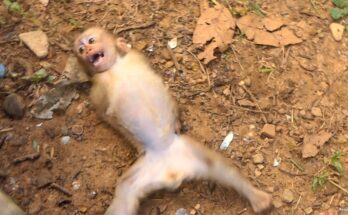The question “What happens if captive monkeys are released into the wild?” opens a heartbreaking and complex reality about animal welfare and survival. Many people believe freeing captive monkeys is an act of kindness — a return to their natural home — but in truth, it often leads to tragedy. Captive monkeys, especially those raised by humans or kept in enclosures, lose many of the vital instincts that wild monkeys rely on every day. They do not know how to find food, recognize dangers, or communicate properly within wild groups.
When a captive monkey is released into the forest, confusion and fear take over. It may not understand which fruits or plants are safe to eat, or how to avoid predators such as snakes or larger animals. Social rejection is another serious issue — wild troops are territorial and often attack newcomers, viewing them as intruders. Without a family group for protection, the released monkey is left lonely, frightened, and exposed to danger.
Additionally, captive monkeys may carry human diseases or parasites that could harm wild populations. Likewise, they can easily catch new illnesses their bodies are not prepared to fight. Even their physical fitness is often weaker; years in cages make their muscles less developed for climbing or escaping threats.
In the end, releasing captive monkeys without rehabilitation is not freedom — it is a slow and painful struggle for survival. The kindest approach is to send them to a proper sanctuary where they can live safely, surrounded by others of their kind, while still receiving care and protection. True compassion means understanding their needs, not just opening the cage door.


